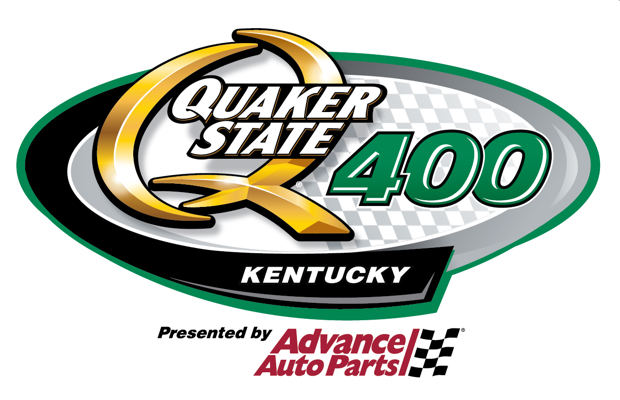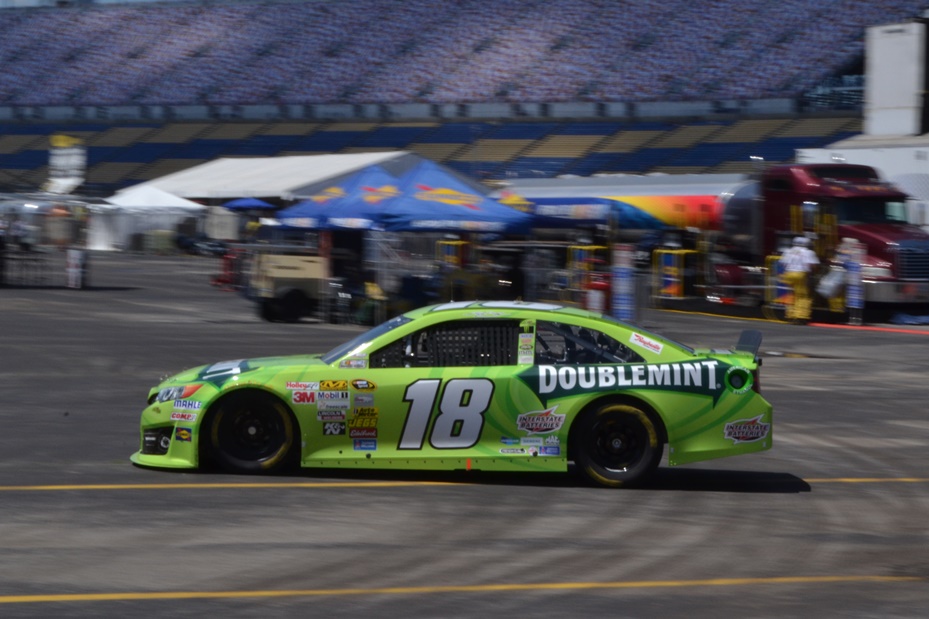Kentucky Motor Speedway has only been on the NASCAR Sprint Cup Series schedule for three years. The 1.5 mile speedway, however, has been in operation since 2000. As with any racetrack, the racing surface ages and changes due to environmental factors such as weather.
This weekend the track’s surface became a hot topic in the garage area. Drivers were commenting on the condition and “raceability” of the speedway nestled in northern Kentucky.
The most recent winner on the NASCAR Sprint Cup Series, Martin Truex Jr. asked about the bumps at Kentucky replied saying, “The bumps, yes – it’s so rough. So difficult with these cars to get them working. We’re on bump stops. The splitter is very close to the ground in these cars.” continuing, “It’s kind of a fun to be able to do that. Definitely a cool place to race, for sure. Very, very challenging obviously. It’s a good place to race – I enjoy it.”
Truex was also asked if there could be more passing than in previous years. Truex commented, “That’s directly related to the banking on the track, the bumps on the track, There’s just not a lot of grip up high. Right now today, if you got out of the black it was pretty treacherous.”
Truex also had the same opinion of many other drivers, that he would not want it re-paved. “You hate to even say the word re-pave. I hate to say it because I’m not a big fan of re-paves.”
Richard Childress Racing driver, Kevin Harvick, who was fastest in first practice on Friday, was asked if had noticed any change in the surface this year. Harvick replied, “No, the track surface is pretty consistent. This is just a really rough race track. There is nothing wrong with the race track; it is just rough. We’d rather see a rough race track than a re-paved race track. I don’t feel that we had much difference from last year.”
Harvick’s Budweiser team used one of the four test permitted by NASCAR to test here at Kentucky, and was probably a major factor in the speed the team showed here on Friday. Harvick pointed out the reason he believes the decided to test here saying, “This one doesn’t really fall into much (comparing with other tracks) but we hadn’t run very well here, so I think that was probably why they decided to come here.”
Another point of discussion has been turn three and how hard it is to get into that corner without having a problem. Harvick said, “Turn three is just really flat getting into the corner, so you kind of drive into the banking and it progressively gets a little bit more as you come off of the corner. It’s really flat there, and you are carrying a lot of speed. You just wind up being loose into the corner for the most part. As you go through the weekend that will be the toughest part to navigate for sure.”
Many times we see the tracks with rougher surfaces and less grip produce better racing. When tracks are re-paved they are smooth and have a lot of grip. That leads to one groove racing. Ideally, we could see a fantastic race at Kentucky if we couple the rough surface with a tire that falls off a lot during a fuel run.
When lap times fall off one to two seconds during a run, a driver must move around, try different grooves in search for grip. This tends to lead to teams being on different strategies, and drivers having to “get up on the wheel” and drive. Some cars are falling back, while others with new tires are coming to the front. In these situations, the drivers ability comes into play much more, putting more emphasis on talent and less on aerodynamic downforce.
All of these factors are a recipe for a much more exciting race. The Quaker State 400 will go green Saturday night at 7:30pm local time.







